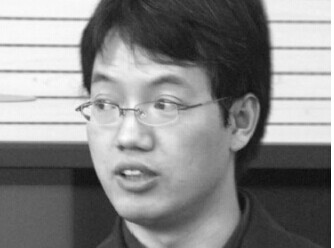GAO CHUANSHENG: Inclusive innovation paves new path to ending poverty
 Thanks to sustained rapid economic development coupled with continued progress in poverty alleviation and social assistance, China has made remarkable achievement in fighting poverty. However, it is still vital to continue to innovate poverty relief measures in order to be more efficient and effective. In such a context, the idea of inclusive innovation, which offers diverse approaches and transcends traditional poverty-relief methods, should be taken as the focus of the anti-poverty strategy in the new
Thanks to sustained rapid economic development coupled with continued progress in poverty alleviation and social assistance, China has made remarkable achievement in fighting poverty. However, it is still vital to continue to innovate poverty relief measures in order to be more efficient and effective. In such a context, the idea of inclusive innovation, which offers diverse approaches and transcends traditional poverty-relief methods, should be taken as the focus of the anti-poverty strategy in the new period.
Inclusive innovation holds that it is not enough to encourage innovations in favor of the economically disadvantaged, such as developing products and services that meet their needs or creating business opportunities for them. It is also crucial to enhance their capacities to learn and innovate, thereby increasing economic opportunities.
However, it needs to be noted that China is confronting serious challenges in its anti-poverty work. For starters, the percentage of the population living in poverty is still very large in districts across the nation and as a result, poverty relief remains a long-term task. Furthermore, existing poverty-relief measures still have outstanding problems, such as moral hazards. Some poor counties have failed to eliminate poverty even after receiving national poverty-relief assistance for a long time. Some counties have become dependent on national welfare and are unwilling to admit they have exceeded the standard for designated poverty-stricken counties. And some places compete fiercely for designation of such counties due to the benefits brought by the national policy.
Similar phenomena can be found among households enjoying the minimum living guarantee. Moreover, residents who are entitled to basic living allowances but are still able to work have little incentive to start businesses or apply for jobs, and some of them may lack opportunities and conditions.
Unlike traditional poverty-relief efforts, which directly give aid in a manner akin to transfusing blood to the sick, inclusive innovation not only provides diversified solutions but also manages to avoid the serious pitfalls that plague existing methods. It puts emphasis on enhancing the capabilities of the economically disadvantaged, creating opportunities and conditions for them, and developing products and service that meet their needs and they can afford. It’s evident that inclusive innovation represents a new idea and strategy of poverty relief that values full participation, a multi-pronged approach and co-governance.
First, we should expand investment channels for human capital, the development of which will be built on the improvement of social services, such as education and skill training, health care and social security. We should also clarify the functions of governments at all levels, increase financial support and ensure equal access to basic public services in order to enhance the capabilities of poor people and prevent the intergenerational transmission of poverty.
Second, abandon traditional free assistance and draw on the experience of Grameen Bank, a microfinance organization in Bangladesh that offers microcredit to the impoverished without requiring collateral. For poor people who are able to work in particular, operation of social enterprise can indirectly but effectively help them develop their own business and thus give full play to their inborn potentials and creativity.
Third, much support should be given to the development of social enterprises so that more jobs can be created. Unlike for-profit enterprises that pursue maximum interests, social enterprises prioritize the solution of social problems and contribute social value. As a consequence, encouraging and supporting the regulated and sound development of social enterprises can in turn provide more employment opportunities and platforms of development to poor people.
Fourth, it’s essential to make full use of the innovative potential of all people. Above all, efforts should be made to develop products and services that meet the need and purchasing power of middle- and low-income people, including the poor, rather than gearing innovation to the needs of the high-end market.
Gao Chuansheng is from the School of Government at Nanjing University.
The Chinese version appeared in Chinese Social Sciences Today, No. 657, October 17, 2014 Translated by Ren Jingyun
